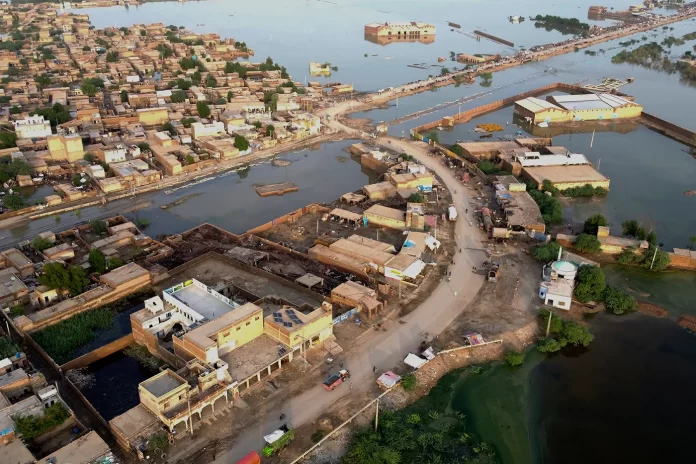Devastating floods and inundated lands in Pakistan claimed more than 1700 lives and caused economic losses of around USD 15.2 billion. Poor urban planning, encroachments, and grey infrastructure that block natural waterways have exacerbated the situation. Cities should be planned to accommodate natural waterways or retain water during low levels to avoid flooding. Timely measures, including land reforms and urban planning, are necessary to address the risk of climate-induced disasters in Pakistan.
Heavy monsoon rains caused devastating floods in Pakistan, claiming more than 1700 lives, and affecting 33 million people. Incurring damage of USD 14.9 billion, and total economic losses to reach about USD 15.2 billion. Estimated needs for rehabilitation and reconstruction are at least USD 16.3 billion, which does not include the need for new infrastructure needed to support the adaption and resilience to any climate-induced disaster in future.
As the climate crisis continues to rise and threaten Pakistan, it is necessary to plan the urban areas with the natural watercourses and not against them. Modern housing societies are planned in a way to protect themselves from the predicted flow of water using concrete structures but such structures and planning are insufficient for the climate unpredictability and shocks in future. While talking to CNN about the grey infrastructures to prevent water flow, Elisa Palazzo, senior lecturer at UNSW Sydney’s School of Built Environment said, “This approach works well when it is possible to predict the extent and volumes of flooding events, but has serious limitations in the current climate unpredictability,”
After the devastating floods, Zulfikar Ali Bhutto, an artist from Pakistan whose work revolves around climate crisis and the Indus River delta returned to his village and saw the devastation that these waters brought, leaving people homeless, without clean drinking water, medical facilities or food. While talking to The Guardian, he maintained that the rivers and natural water flow have been damaged by the modifications and grey structures. “Of course, this is an extreme event, but we’ve eliminated the river’s way of healing itself. So it is jarring and it is angry and is breaking and pouring from this side and that side. It’s creating pressure points. We should not intrude into nature and close its paths,” said Bhutto.
Karachi has been a victim of urban flooding due to poor planning and governance. Monsoon rains become a hassle for Karachi as the roads get flooded, and electricity is cut off for several hours and even days. Imran Khalid, a climate expert while talking about the encroachments and illegal construction said, “If you block the flow of water, it will go around you; if it can’t go around you, it will continue to rise until it envelopes you.” The crises were “of our own making”,
Islamabad is at risk of urban flooding due to the construction of housing schemes that cover the natural watercourses and stormwater drains. In 2020, Ravi Urban Development Authority, an initiative of the then-ruling party PTI also stirred a great debate as the agricultural land near Ravi and the water sources are at risk.
The cities should be planned in a way that they accommodate the natural waterways within them or have the capacity to retain water when the water levels drop.
Countries throughout the world are striving to scale up their efforts to deal with climate change and the unpredictability of the water flow. Thai architect Kotchakorn Voraakhom while addressing the need for urban planning to avoid climate-caused flooding told CNN, “Climate change is causing cities to sink, and our current infrastructure makes us even more vulnerable to severe flooding,”
After the recent floods, Pakistan is in dire of land reforms and urban planning. It is essential to understand the risk of flooding by mapping flood-prone areas and preserving natural watercourses.
Pakistan is vulnerable to climate-induced disasters and it is evident from the frequent urban flooding and the disastrous floods last year that if timely measures are not taken the country would continue to face catastrophes in future.




